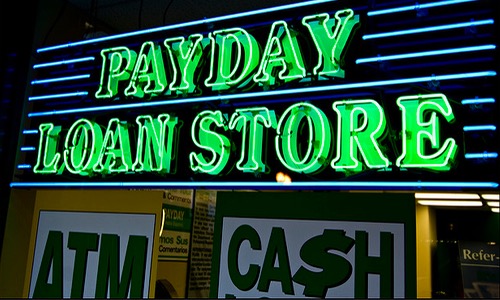If you’re looking for a business story to intrigue your readers, try one on predatory lending, something that involves the ever-popular topics of money, politics and consumer debt.
In October 2017, the Consumer Financial Protection Bureau issued rules limiting the reach of payday lenders who make short-term, high-interest loans with annual percentage rates that can skyrocket to 400%. President Trump responded by firing Richard Cordray and appointing Mick Mulvaney, who put a freeze on the agency’s enforcement policies.
This story touches 28% of the U.S. population — more than one in every four U.S. consumers. Make a case to your editor for developing a series, or special investigative report, after looking into payday lending practices in your coverage area.
What’s happening on Capitol Hill?
Shortly after President Trump appointed Mick Mulvaney, the House of Representatives, by a vote of 225-16, passed legislation overturning the government watchdog agency’s rule. H.R. 3299 allows payday lenders to transfer loans to a third party, such as a bank, regardless of state law.
In 2016, borrowers who took out payday loans spent $9 billion in fees, according to the Pew Charitable Trusts. Since 1989, the payday industry has contributed $13 billion to Congressional campaigns, according to opensecrets.org, the website of the Center for Responsive Politics. To hear both sides of the story, you can contact Christopher Peterson at the Consumer Federation of America, and Dennis Shaul, CEO of the Consumer Financial Services Association of America, the industry’s primary lobbying association.
Where does your state stand on predatory lending?
The majority of states (37) have “specific statutes that allow for payday lending,” reports the National Conference of State Legislatures. Eight states (Connecticut, Maryland, Massachusetts, New Jersey, New York, Pennsylvania, Vermont, and West Virginia), in addition to the U.S. territories of Guam, Puerto Rico and the Virgin Islands, don’t allow payday lending, and/or require lenders to comply with caps on interest rates, while three others (Arizona, Arkansas and North Carolina) and the District of Columbia repealed or allowed pre-existing legislation to expire.
Where does your state stand on the issue?
What alternatives to payday loans exist?
Community groups have put forth alternatives to payday loans that include government-run public banks and banking at the U.S. Post Office. Consumers who currently shell out over $2,400 a year in interest and fees to payday lenders lack access to a traditional bank could tap the benefits of banking at the post office, argues this 2014 white paper from the Inspector General of the U.S. Postal Service. Find out if any groups in your area are behind these movements, and what resources local groups may have to offer consumers who use payday loans.
National sources such as Nick Bourke, director of small-dollar-loans project at the Pew Charitable Trusts; Lauren Saunders, associate director at the National Consumer Law Center; and Bruce McClary, executive director of the nonprofit National Foundation for Credit Counseling are good sources for this story.











